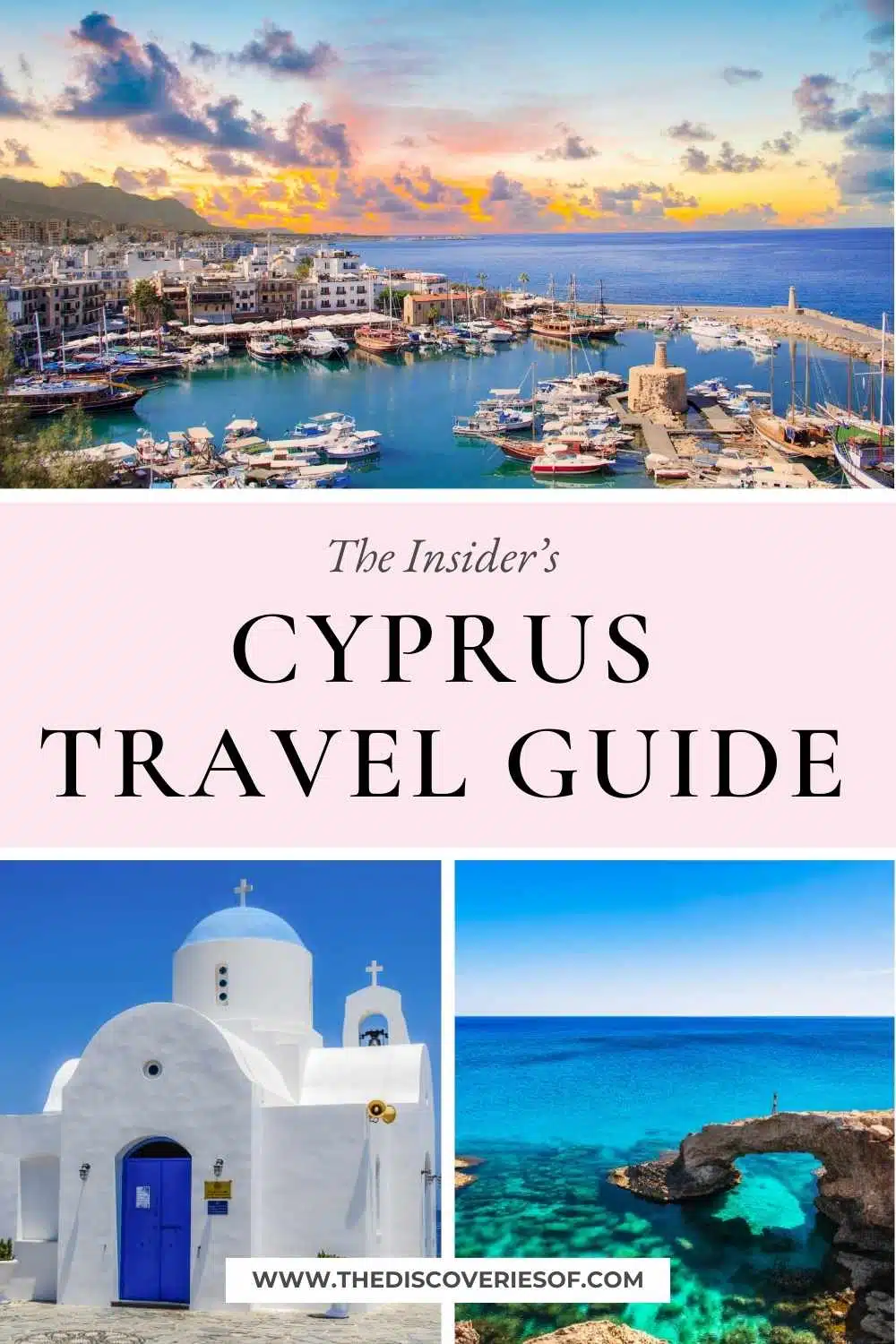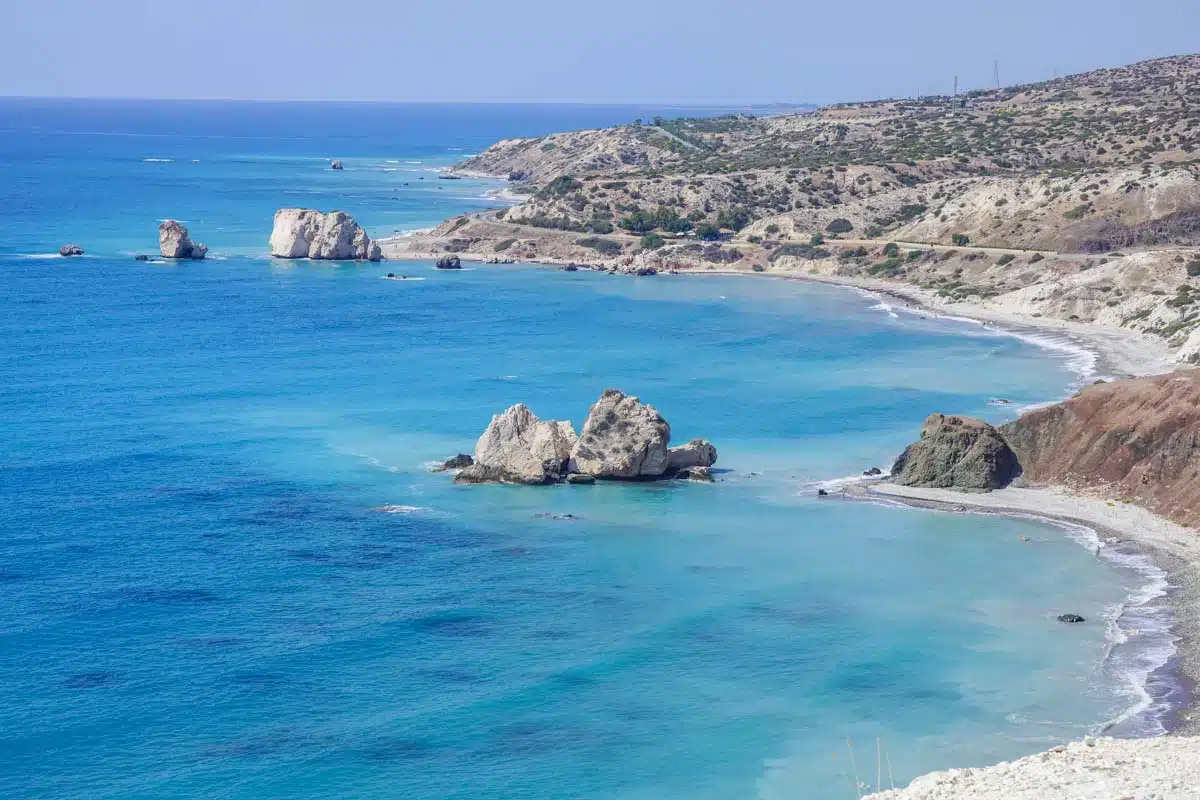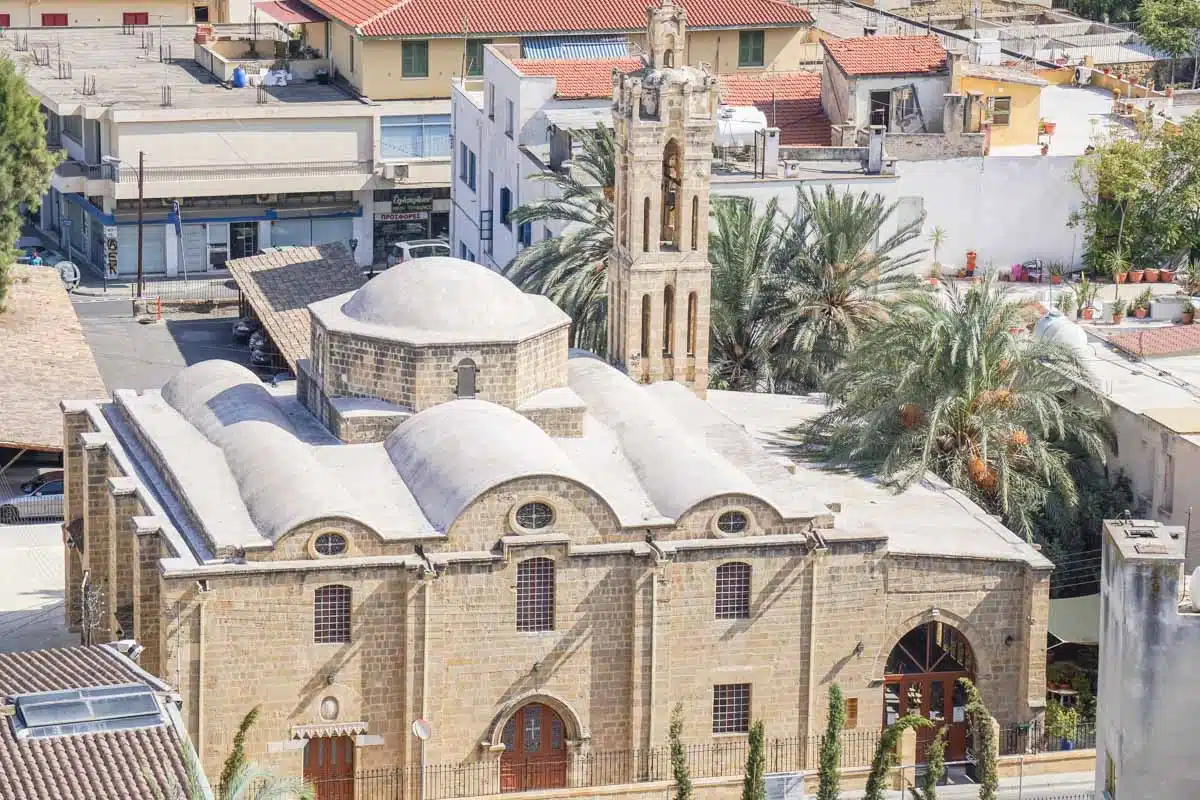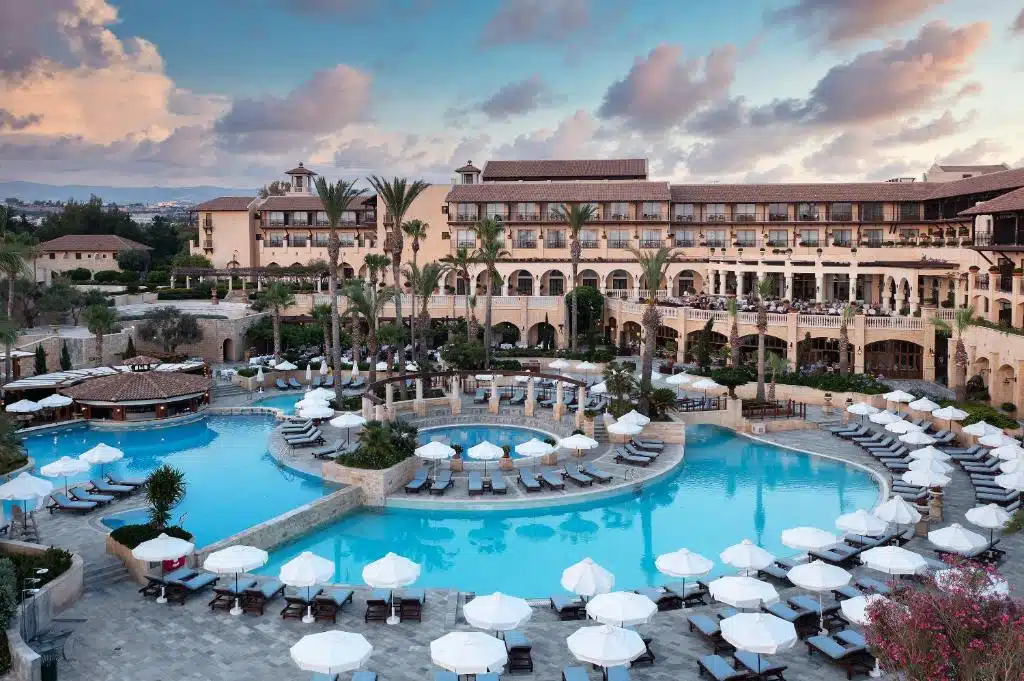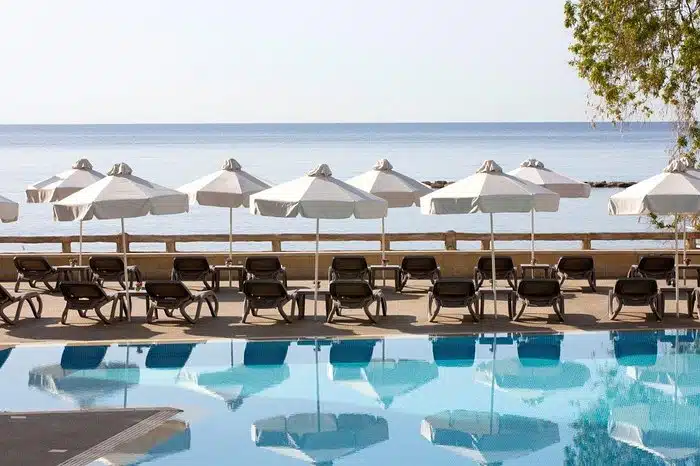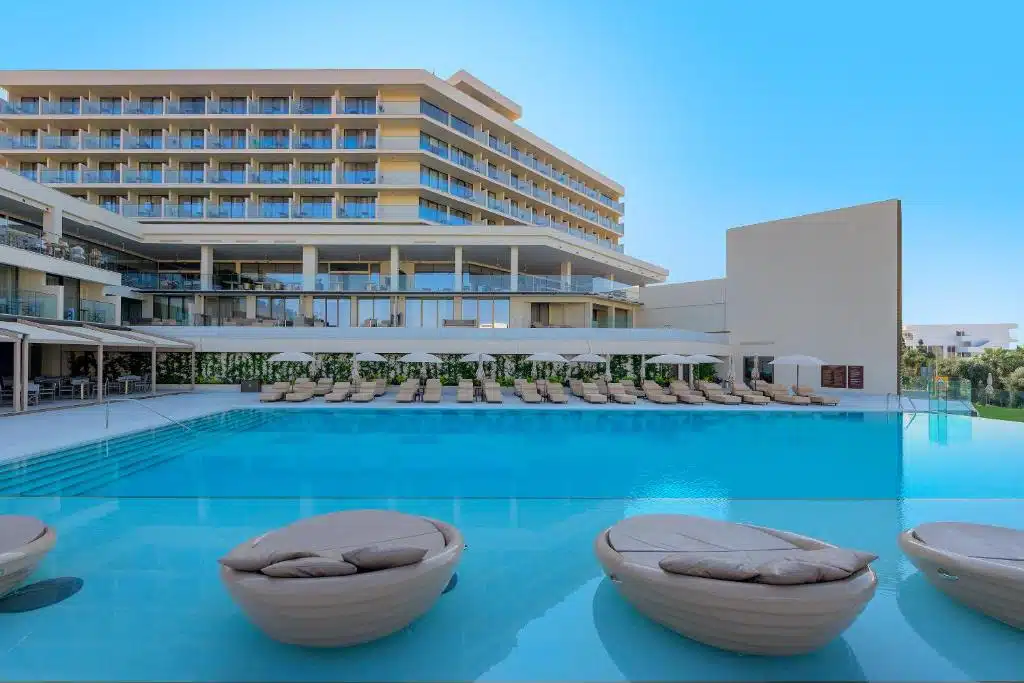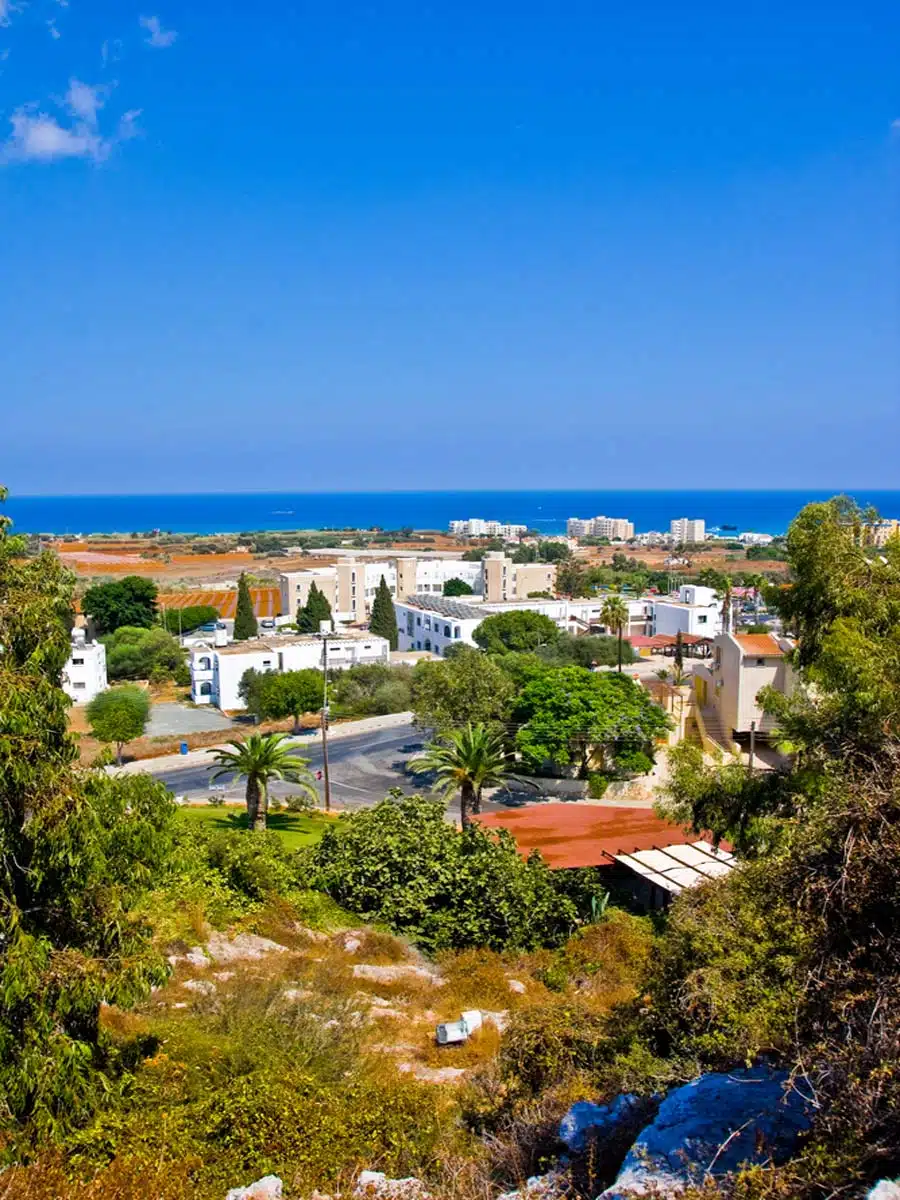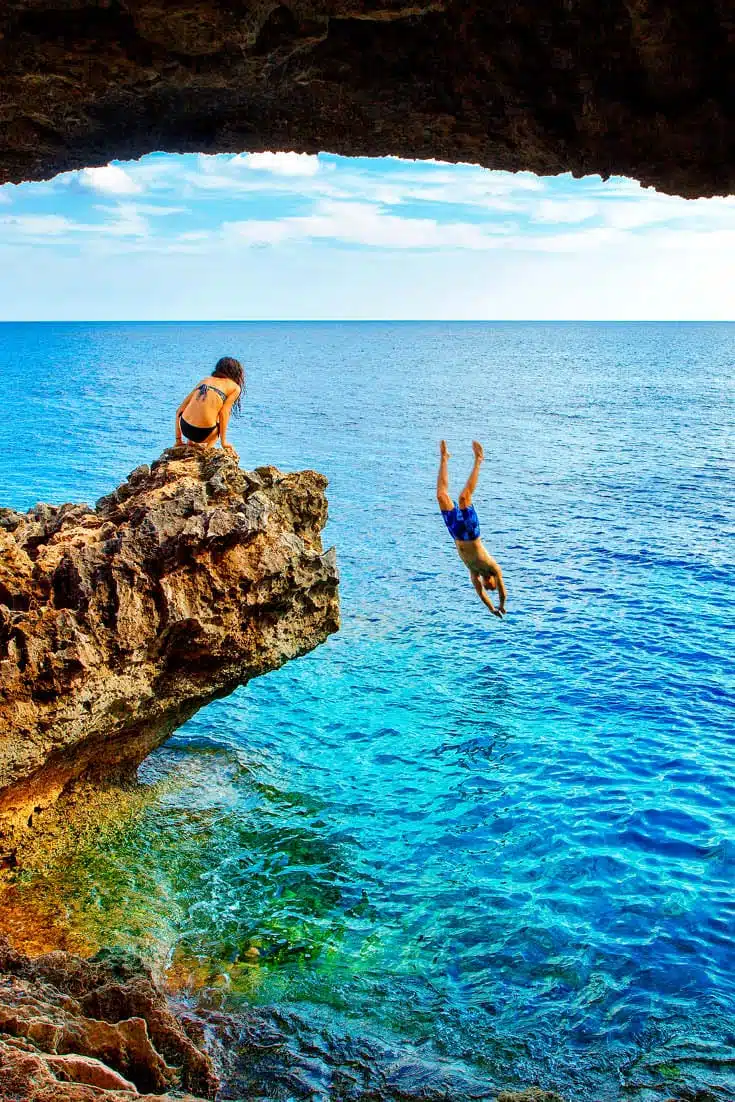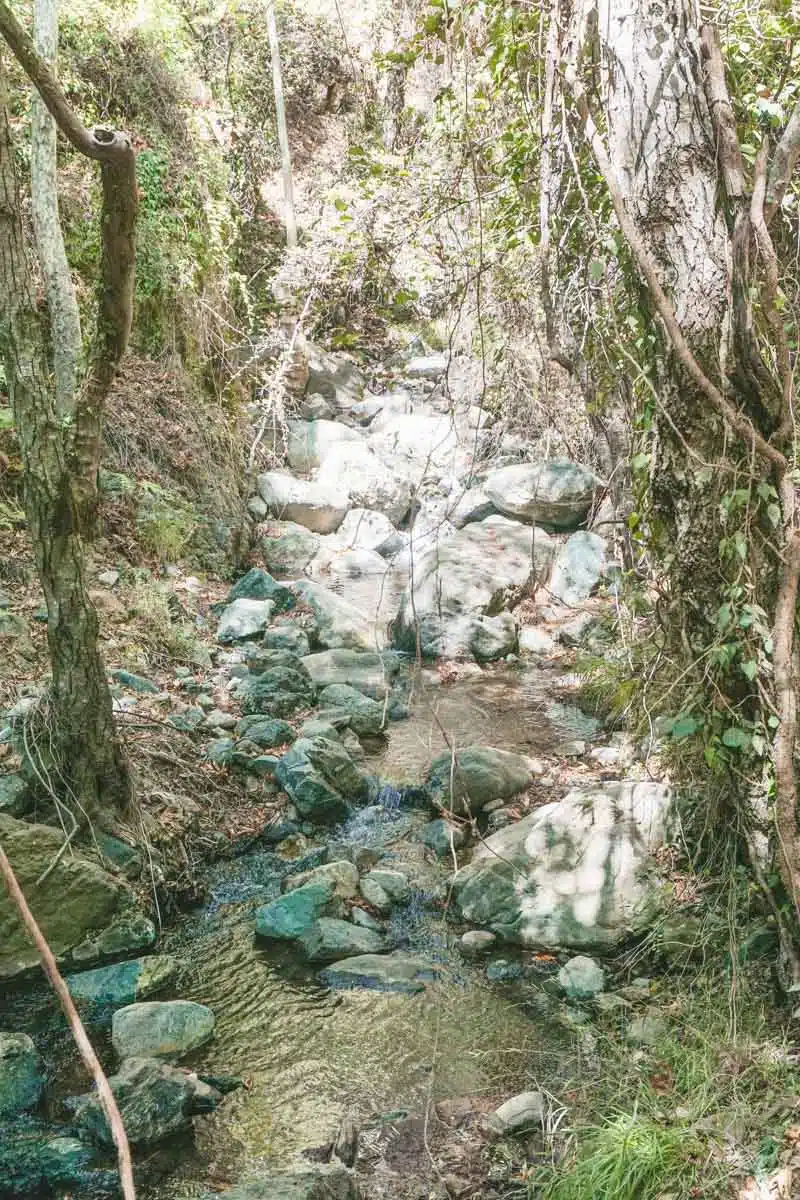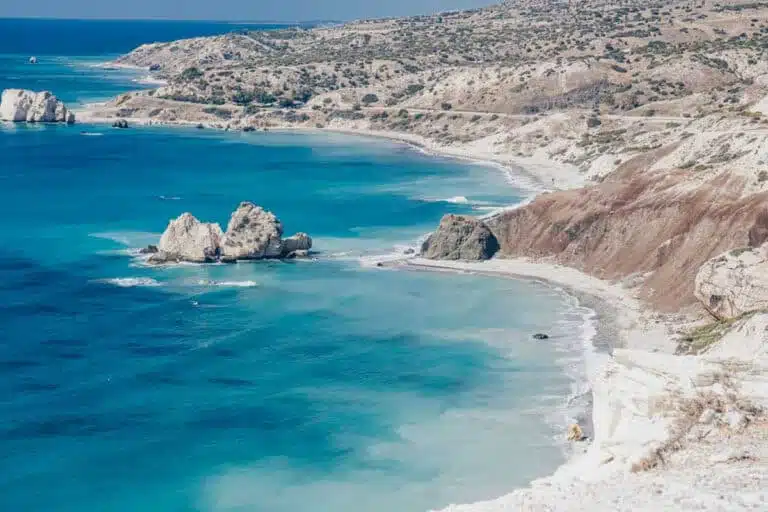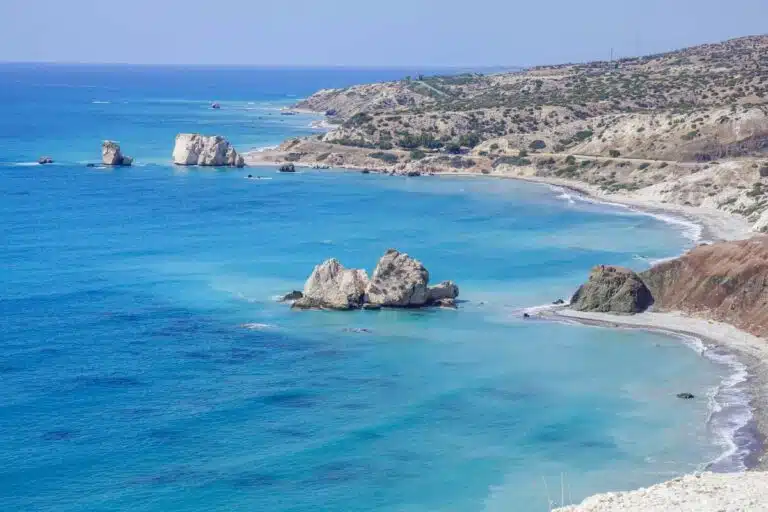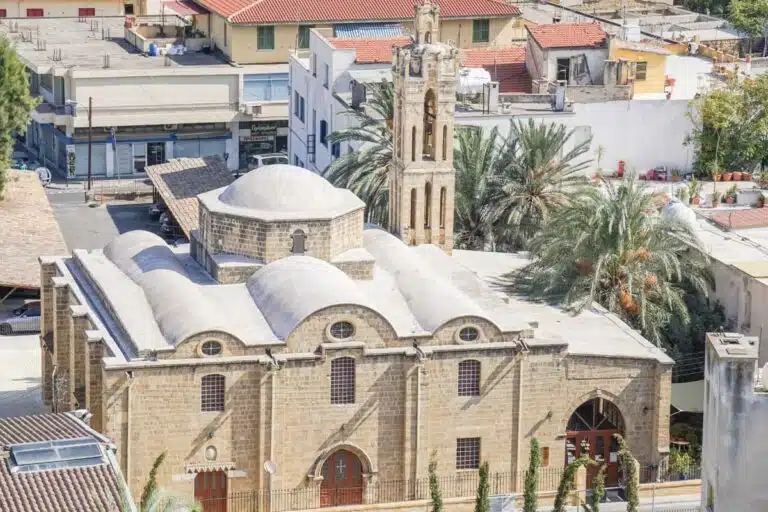
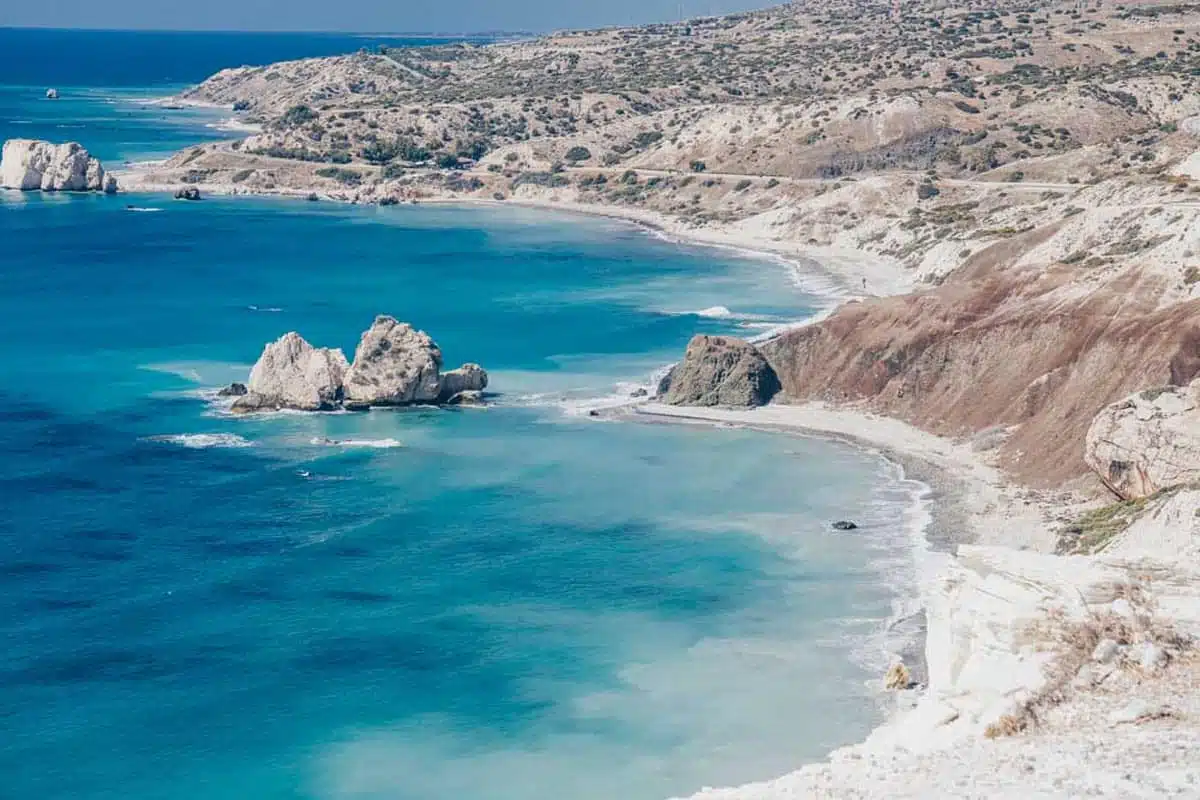
Cyprus Travel Guide
Reputed to have been graced by the gods in times past, Cyprus is a trove of idyllic beaches lapped by turquoise waters, historic sites and lushly forested mountains. Explore with this Cyprus travel guide.
Nicknamed the “Pearl of the Mediterranean”, Cyprus makes plentiful appearances in classical mythology as the home of Aphrodite, the goddess of love and fertility. The remnants of that fabled past live on in the island today – whether it’s in its varied coastline or the vibrant capital of Nicosia.
This guide walks you through the best of the island – covering the top sights, practical tips and suggested itineraries. Let’s go!
How to Plan a Trip
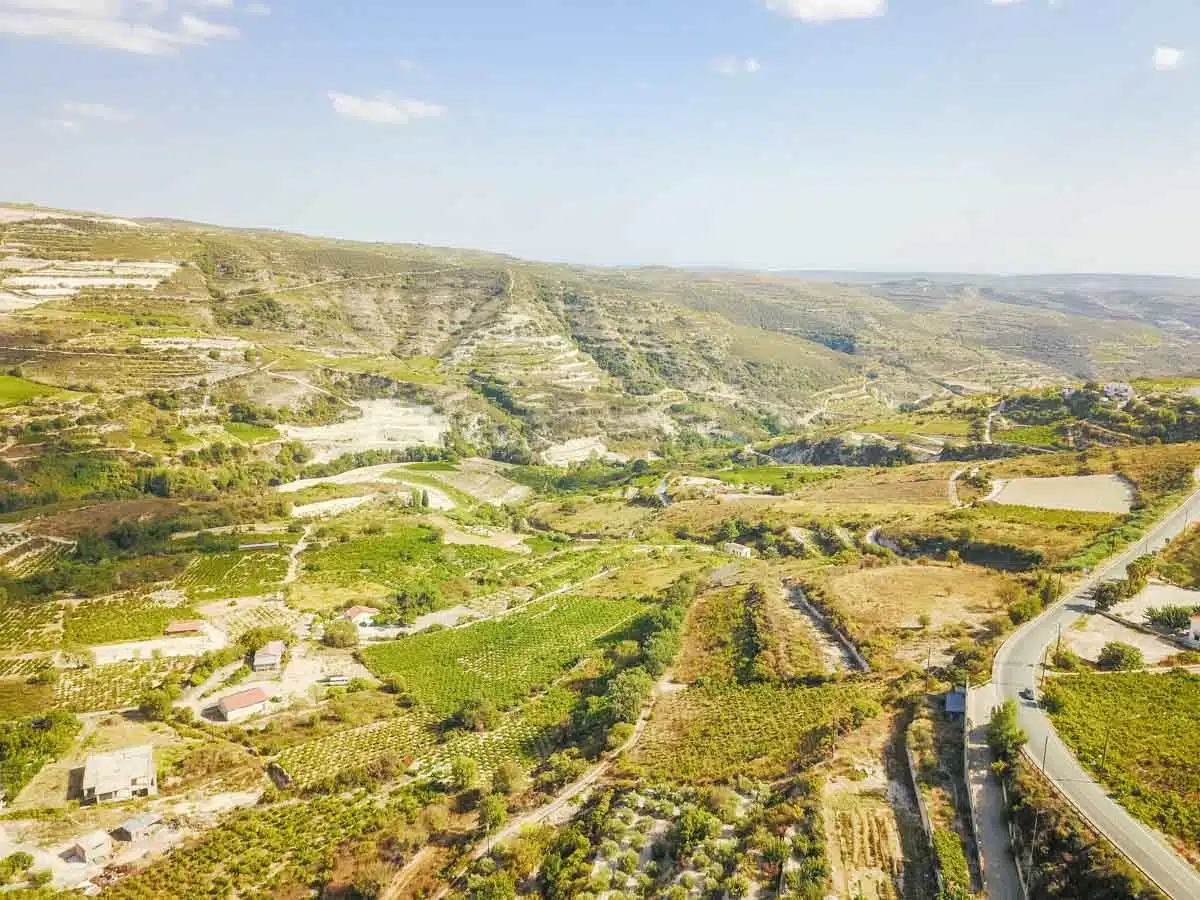
Best time to visit
Cyprus has a typical Mediterranean climate with hot and dry summers and mild and wet winters. The high season runs from July to August – expect peak summer weather and crowds thanks to the European summer holidays.
Want to avoid the crowds but still have pleasant weather? Visit from March to May instead. Around this time, it isn’t scorching yet, and given it’s the shoulder season, you’ll save a few bucks, too.
Handy Resources
- Skyscanner for Flights is a great way to score affordable plane tickets conveniently.
- Holiday Autos allows you to compare rental car prices no matter where you arrive in the country.
- Akgunler Denizcilik helps you book a ferry if you’re entering Cyprus from Turkey. Book from the app for a 10% discount.
- Pame App is the official Cyprus public transport app and helps you plan your bus route.
Where to Stay
Nicosia
Cyprus’ divided capital is a city with a distinctly Eastern character. Still encircled by its Venetian walls, it’s a charming mix of bustle punctuated with small oases of peace. Explore landmarks like Shacolas Tower before feasting on meze at a homely taverna.
Stay at Okeanos Beach Boutique Hotel
Ayia Napa
A lively coastal city, Ayia Napa is a great place to stay if you want to spend time on the beach and make the most of its nightlife. Your cup will never run empty of clubs and bars to visit.
Stay at Amarande, Adults Only Hotel
Paphos
The perfect base for history-lovers, you can (and should) spend days exploring the harbour and Paphos Archaeological Park alone before striking out to see the wider island.
Stay at Leonardo Plaza Cypria Maris
Limassol
The second-largest city in Cyprus, nestled on the Akotiri peninsula, Limassol is a surprisingly lively spot, with lots of shops, restaurants and bars – not to mention hotels.
Stay at Alasia Boutique Hotel
Read Next: Where to Stay in Cyprus
Packing For Your Trip
Packing for your Cyprus trip? Don’t forget…
- Waterproof hiking boots — to explore Cyprus’ volcanic shores and mountains.
- Insulated water bottle — to keep hydrated on hikes or city walks.
- Sun protection — to avoid sunburn while on the beach.
- Jackets — to warm up cool evenings.
- Beachwear — you wouldn’t want to miss these beaches.
Travel Insurance
If you travel often, you know the importance of a good travel insurance plan. It adds an extra blanket of security in an emergency on international waters. I use AXA Travel Insurance to help you whether you’re experiencing luggage issues, flight cancellations, or health issues abroad.
Suggested Guidebooks
- Rough Guide has a handy free ebook.
- Lonely Planet covers insider tips.
- Marco Polo has a pull-out map to help you navigate more easily.
Plan your next great travel experience!
Sign up for insider tips straight to your inbox.
Cyprus Visitor Guide: What to Do During Your Cyprus Trip
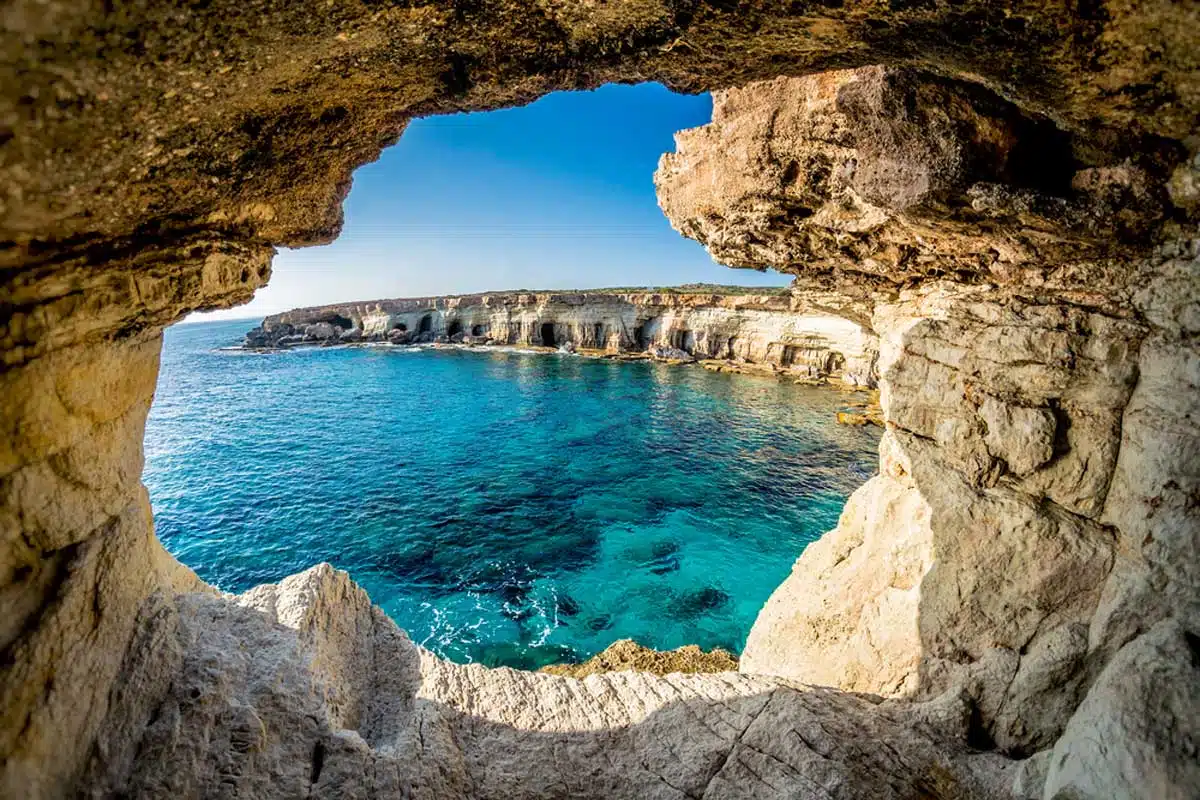
Top Things to Do
Hiking in the Troodos Mountains
The iconic Troodos Mountains are Cyprus’ largest mountain range and the perfect destination for hiking (and, during the winter season, even skiing). The Artemis trail – on the island’s highest peak – is moderately challenging and only takes about two hours to finish. Expect lush landscapes, century-old trees and scenic views.
Aphrodite’s Rock (Petra tou Romiou)
The legends run deep at Aphrodite’s Rock (or Petra tou Romiou as it’s locally-known). Steeped in mythology, the iconic geological formation is said to be the birthplace of Aphrodite.
Have you heard about the legend of Aphrodite’s Rock? It says whoever swims around this stone will have eternal beauty and love. Is it true? Try it out for yourself. Even if you’re a non-believer, you can still splash on the beautifully pristine beach. It’s a win-win.
Ayia Napa
Not everything in Ayia Napa has to do with nightlife and parties. What was once a sleepy fishing village has transformed into a hotspot thanks to its crystal-clear waters and stunning golden beaches.
Beaches like Nissi Beach and Makronissos Beach draw in the crowds. If you want a quieter experience, head to Konnos Bay – a small cove surrounded by cliffs and lush greenery instead.
For a dose of culture, you can’t miss the Ayia Napa Monastery, Thalassa Museum and Sculpture Park.
Paphos
Located on the southwest of the island, the coastal city of Paphos is a UNESCO World Heritage Site that’s packed with historic gems.
Divided into two main sections – the contemporary Paphos Town and Kato Paphos, home to the archeological park with its numerous ruins and relics.
Spend sun-drenched days whiling away time by the harbour, or delve into the archaeological park, which houses prehistoric ruins, a Byzantine castle and medieval baths, among other things.
Limassol
Dotted with five beaches, many people visit Limassol for its blue waters and buzzing party atmosphere. After all, 17-km of coastline does rather demand to be explored. Beaches range from lively spots to quieter locations such Lady’s Mile Beach and Governor’s Beach.
But don’t forget to explore Limassol’s history. Follow Old Town’s cobbled streets to the 13th-century Limassol Castle, Cyprus Byzantine, and Medieval Museum. That castle – the supposed place where Richard the Lionheart married Berengaria of Navarre in the 12th century – is now a museum, and a pretty fascinating one at that.
Platres
Set on the slopes of the Troodos Mountains, this mountainous village is in a perfect scenic location to showcase a different side of the island. Historically, Platres used to be a summer retreat for the island’s affluent crowd, who’d come to its higher climes to escape the stifling summer heat.
Its location places it as the perfect base for exploring the Troodos mountains. Set off on the pretty trail to the Caledonia Waterfalls, a roaring cascade set amongst verdant woodland.
Just outside of Platres, the UNESCO-designated Byzantine church of Timios Stavros dates back to the 12th century – decorated with a number of intricate wall paintings charting the deeds of the New Testament.
Nicosia
The capital of Cyprus blends history and modernity like no other. Add in the fact that it’s the world’s last divided capital and you have the setting for one of the most fascinating spots on the island.
The Old Town is still enclosed within its Venetian Walls – a labyrinth of streets in which the sounds of Greek folk music float on the air and traditional tavernas turn out hearty Cypriot dishes to locals and visitors alike.
There’s a lot to see – from the bustling pedestrian thoroughfare of Ledra Street to the Cyprus Archaeological Museum, Leventis Municipal Museum of Nicosia, where you can take a deep dive into the city’s history and the stunning Selimiye Mosque – a former cathedral turned into an Islamic place of worship.
Tomb of the Kings
Yes, I know I had an entry on Paphos, but the Tomb of the Kings is such an important destination that it deserves an entry of its own.
These beautifully preserved ruins and UNESCO World Heritage sites are a must-see in Cyprus. From above ground, they look like typical ruins, but travel underground and see the intricate solid rock gravesites dating to the 4th century.
Read Next: The Best Things to do in Cyprus
Suggested Cyprus Itineraries
Cyprus Highlights
One week
Larnaca — Nicosia —Troodos Mountains — Paphos — Ayia Napa — Larnaca
Choose your base for the trip, then spend Spend a day in each location to explore the best of the island.
Troodos Mountains
Two days
Agros — Kyperounta village — Troodos Botanical Garden — Artemis Trail — Platres — Omodos — Lania village — Pelentri village
Connect with the Troodos villages for local food and tastings and hike Cyprus’ most extensive mountain range.
Myths of Aphrodite
Day trip
Akamas National Park — Paphos — Kouklia — Petra tou Romiou — Kourion Beach — Limassol
Walk in the footsteps of the goddess of love as you learn about Aphrodite’s birthplace and archaeological sites dedicated to her.
Akamas Peninsula Adventurer
Day trip
Akamas National Forest Park — Baths of Aphrodite — Blue Lagoon — Avakas Gorge Nature Trail — Lara Bay — Paphos
Travel Cyprus’ many outdoor wonders in the Akamas Peninsula.
Hidden Cyprus: Off the Beaten Path
Visit the Blue Lagoon
Nestled in the Akamas Peninsula, the Blue Lagoon is a slice of paradise offering some of the clearest, most pristine waters on the island. This secluded bay, known for its strikingly blue and crystal-clear waters, is best explored by boat – with abundant opportunities for swimming and snorkelling too.
Akamas Peninsula
Located on the northwestern tip of Cyprus, the Akamas Peninsula is a stunning area of natural beauty that’s known for its diverse landscapes and rich biodiversity.
Head to the rugged locale of the Avakas Gorge (entry below), where you can hike between towering limestone walls – or explore the peninsula’s other attractions including Lara Beach and the Baths of Aphrodite.
Go Wine Tasting in Cyprus’ Charming Towns
Calling all wine aficionados and foodies. Stop by the Troodos Mountains’ charming wine villages and towns for plenty of options for local wine tastings and food pairings. Put Omodos and Ayios Amvrosios at the top of your list.
Alternatively, Vasilikon Winery is perched in the hills above Paphos and consistently turns out some of the best wine on the island.
Avakas Gorge
This grandiose gorge just off Paphos is perfect for outdoor lovers. On the out-and-back trail, you’ll walk alongside the trickling Avgas River, brushing past many indigenous flora and tall rocks.
How to See the Best of Cyprus for Free
Take advantage of the fact that all the beaches in Cyprus are free to enter and visit its endless coastline and blue waters.
For a more lively activity, how about taking hikes in Cyprus? The Aphrodite Trail and Troodos Mountains are ripe for exploration.
Of course, a stroll and window shopping in the historical towns and villages is also a great low-cost activity.
Dishes to Try in Cyprus
Fasolada – White beans and vegetable soup, Cyprus’ national dish.
Baklava – Dessert with nuts and honey rolled and baked in phyllo pastry.
Kleftiko – Slow-cooked lamb and vegetables.
Top Drinks in Cyprus
Cyprus Coffee – A strong black coffee served with a glass of cold water.
Cypriot Brandy Sour – The unofficial national cocktail that uses Cypriot brandy.
Map of Cyprus
